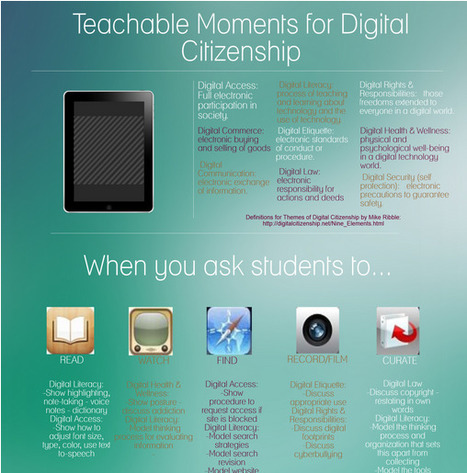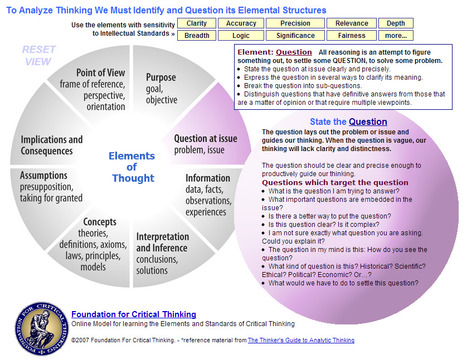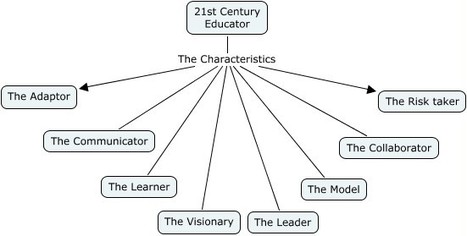"In preparing for professional development on the topic of Digital Citizenship ...I have been searching for a resource to share on the importance of modeling these skills...I know that teaching in isolation is not usually as effective as taking advantage of teachable moments – when students are actually online and pursuing a learning task to reinforce appropriate behavior, safety, and application of skills."
Get Started for FREE
Sign up with Facebook Sign up with X
I don't have a Facebook or a X account
 Your new post is loading... Your new post is loading...
 Your new post is loading... Your new post is loading...

Alistair Parker's curator insight,
January 30, 2013 3:57 AM
Beth Dichter's insight: This is a great interactive model of critical thinking. One circle has 8 elements of thought: * Question at issue * Information * Interpretation and influence * Concepts * Assumptions * Implications and Consequences * Point of View As you role over and selelct an element of thought you are hown additional information about the element. For example, if you were to select Point of View you would be prompted to understand your point of view and provided with questions to further your thinking. In addition there are also prompts for intellectual standards to consider. The intellectual standards include: clarity, accuracy, precision, relevance, depth, breadth, logic, significance, and fairness. In each of these area there is a brief definition as well a three additional questions to consider. There is also one choice (more) that provides you with additional standards you might want to consider and suggests that you think of your own. 
R Hollingsworth's curator insight,
January 30, 2013 9:33 AM
I'm thinking this is a pretty complicated model given that many of our very best critical thinking is done within the space of a blink! However, it's useful to be able to break it down and explain it for undergraduates for whom universities have great expectations in criticial thinking but don't really explain how they know what it is when they see it. And, sadly, in introductory courses too often professors don't expect critical thinking of their students - sticking too close to recall or lower levels of application thinking for their expectations of student performance. 
R Hollingsworth's comment,
January 30, 2013 9:34 AM
terrific toy for educators to play with and use - would work great in a group discussion with a faculty scholarly community...
|
|















interesting for 21st century skills and whatnot
A good infographic for teachers as they integrate technology. Modelling digital citizenship authentically through teachable moments!